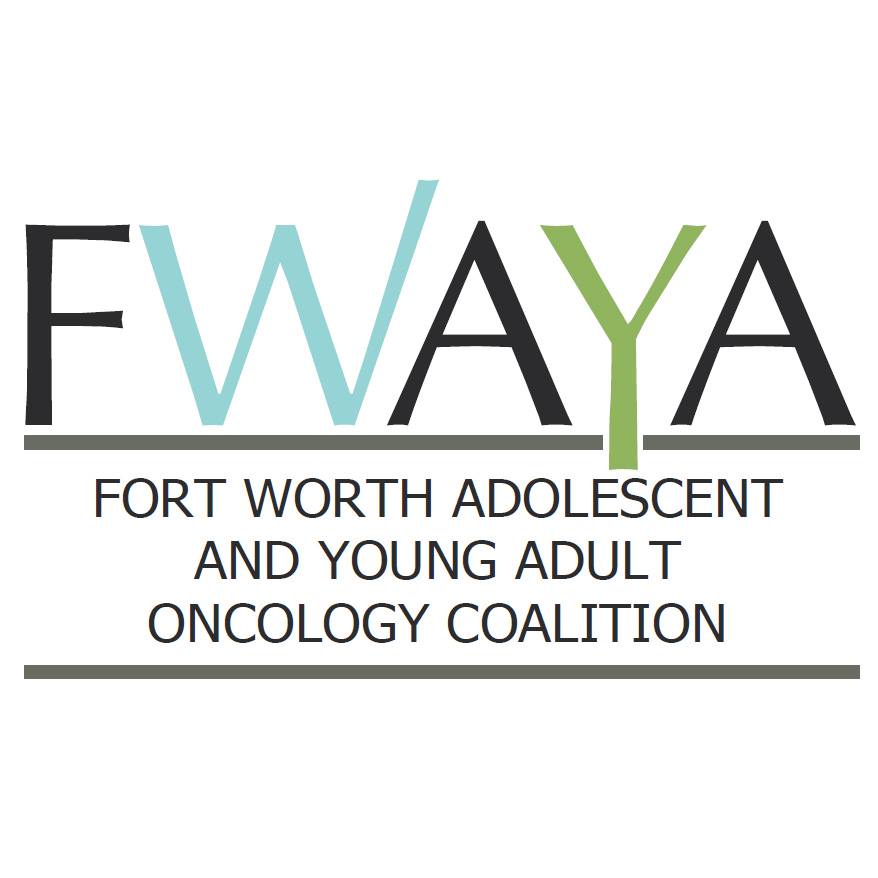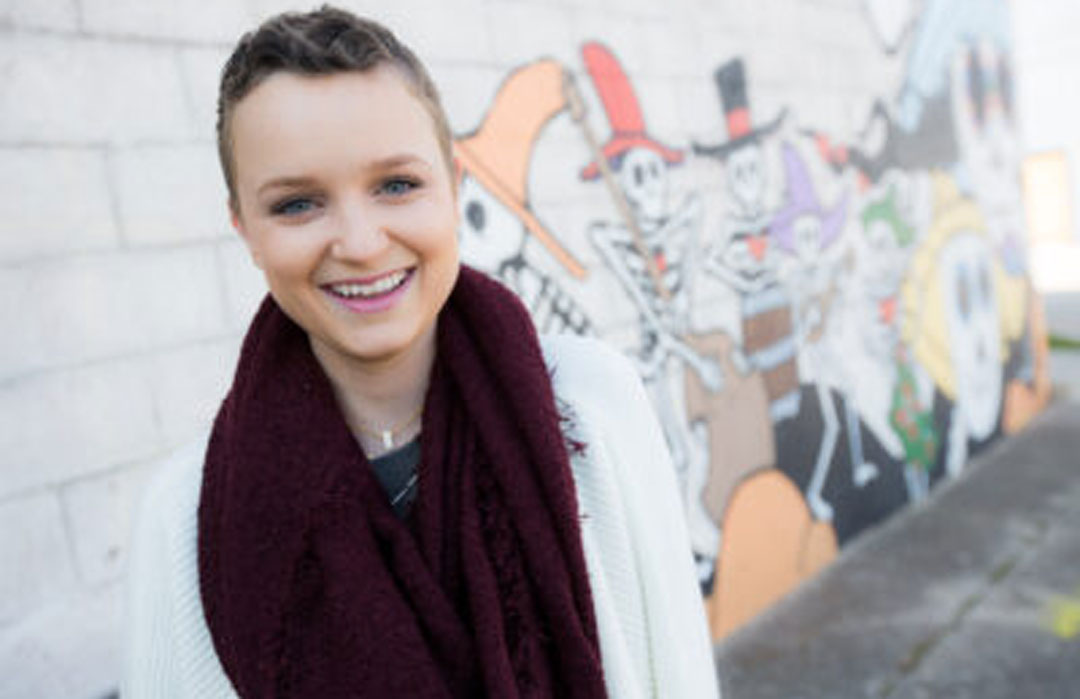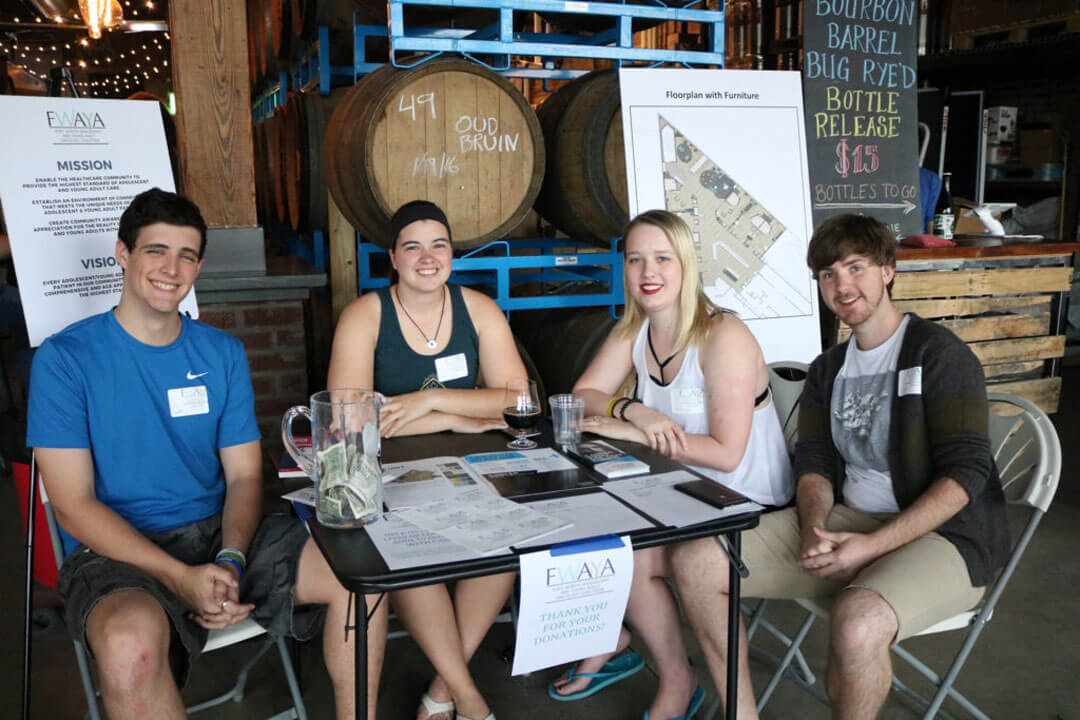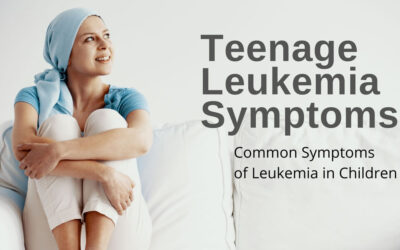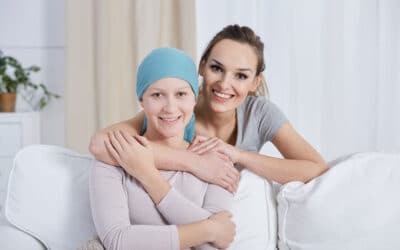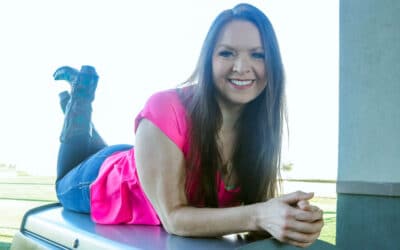WHAT IS AYA?
Adolescent And Young Adult Oncology
Make a Donation
Watch a Message About Our Campaigns
Every Year
AYAS DIAGNOSED WITH CANCER IN THE U.S.
WHAT IS AYA?
AYA is an acronym that stands for adolescent and young adult. AYA oncology is defined by the National Cancer Institute as cancer care, or research focused on those diagnosed with cancer between the ages of 15 to 39 years old.
There are many reasons for this age definition, both biological (menarche to menopause) and developmental (independence from your parents’ care to taking care of your parents).
The age range is meant to be broad enough for inclusivity, but it is accepted that only a subgroup of the age range might be appropriate for a given task (like a support group).
Make a Donation
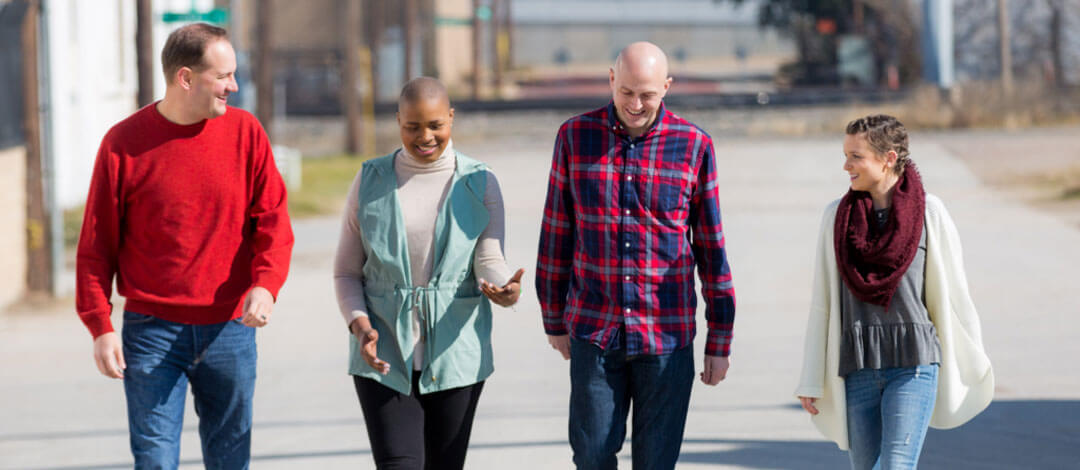
WHAT MAKES AYA CANCER DIFFERENT?
areAYA CANCER PATIENTS ARE AN UNDERSERVED POPULATION
AYA cancer accounts for more than 6% of all cancer diagnoses each year, 8X as many cases as pediatric cancers, less than 1% of all cancer diagnoses during the same period.
The extraordinary focus on pediatric cancer has resulted in extensive improvements in survival for children.
There is specialized training for physicians and nurses, dedicated clinical trial networks, designated research agendas, and budgets, specialized inpatient and outpatient environments, and more.
There is a limited focus and are even fewer resources for the AYA population.
AYA oncology needs a focus similar to pediatric oncology to improve survival and quality of life.
PERCENTAGE OF CANCER DIAGNOSES EACH YEAR: BY AGE GROUP
- PEDIATRIC 1%
- AYA 6%
EWING’S SARCOMA: AVERAGE 5-YEAR SURVIVAL RATE
- 5 YEAR OLDS 70%
- 30 YEAR OLDS 45%
ACUTE LYMPHOBLASTIC LEUKEMIA: AVERAGE 5-YEAR SURVIVAL RATE
- PEDIATRIC TREATMENT REGIMEN 67%
- ADULT TREATMENT REGIMEN 46%
THEIR BODIES RESPOND TO TREATMENT DIFFERENTLY
For many cancers, survival rates decrease based on age. For example, under the microscope, a tumor-like Ewing’s sarcoma may look the same for a 5-year-old and a 30-year-old, but the average 5-year survival rate for the child is 70% while that for the young adult is 45%.
If you are only used to treating adults, a 45% average 5-year survival rate may seem “acceptable.”
Still, once you know a child with the same tumor makeup responds to treatment much better, it impassions you to improve treatment outcomes for AYAs.
The difference can sometimes be a matter of life or death.
SURVIVAL VARIES BASED ON EXPERTISE
Young people, ages 15 to 25, are caught in a medical gray area.
They can receive cancer care from a pediatric or adult oncologist.
On the surface, that doesn’t seem like a big deal.
However, researchers have discovered that pediatric and adult cancer treatment regimens lead to significant cancer survival differences.
In acute lymphoblastic leukemia, the difference was a 5-year patient survival rate of 67% when using a pediatric regimen versus 46% when using an adult cancer treatment regimen.
The data reinforced a need to delve deeper into the issue and understand the differences in treatment approaches and its impact on patient outcomes, especially when considering that approximately 66% of 15 to 19-year-olds are never seen by a pediatric oncologist.
AYA SURVIVAL RATES HAVE BARELY IMPROVED
Despite cancer being the no. 1 cause of disease-related deaths in 15 to 39-year-olds, more than half of all evaluable AYA cancers have shown no improvement in their 5-year survival rates over the past 30 years.
Over the same period, survival rates for children and older adults have experienced dramatic improvements.
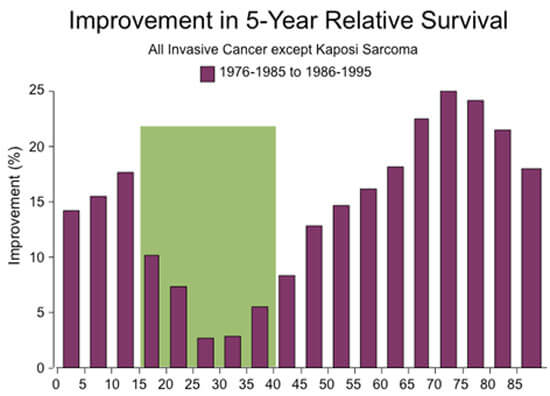
There are many reasons we haven’t seen much improvement in survival rates for this population.
They include delayed diagnoses, non-adherence to medical treatment, a lack of AYA-focused care, limited understanding of the differences in AYA biology, and low AYA participation in research-based clinical trials.
Explore the tabs to learn more.
DELAYED DIAGNOSIS
When a diagnosis is delayed, it can result in a cancer that is later-stage and more, difficult -to -treat and cure.
Delayed diagnosis can be attributed to many factors that include:
Young adults:
- Not knowing their family medical history, especially if there is a cancer predisposition.
- Engaging in riskier behavior such as sun or tanning bed exposure, missing immunizations, smoking, poor nutrition, and lack of exercise
- Not knowing cancer symptoms
- Not undergoing annual physicals
- Lacking health insurance
- Having discomfort or intimidation talking to doctors
- Practicing denial and invincibility
- Physicians can be part of the delay as well:
-
- Not considering the possibility of cancer (“you’re too young for that”)
To learn more about the life-saving benefits of early detection, go to DetecTogether.org
NON ADHERENCE
AYAs are more likely to be inconsistent with therapy, follow-up, and survivorship plans due to:
- Life and family transitions
- The cost of treatment and financial toxicity
- A lack of age-relevant resources and understanding
- A desire a return to normalcy
LACK OF AYA EXPERTISE
There is a lack of specialized AYA Oncology providers, teams, and programs.
Providers are either trained in pediatric oncology – where the focus is on caring for young children with pediatric cancers – or in medical oncology, where the focus is on caring for older adults with adult cancers.
85-90% of patients in a pediatric hospital are under 15, so services and delivery are geared towards them.
90-95% of patients in an adult hospital are over 40, so the services and delivery are geared towards older patients.
The AYA patient is LOST IN THE GAP.
DIFFERENCE IN BIOLOGY
There is a limited understanding of the difference in the biology of tumors in AYAs compared with children and older adults.
- Perhaps it’s a difference in the way an AYA metabolizes or tolerates chemotherapy.
- Perhaps the hormonal and cellular signaling around the tumor is different in an AYA body.
- Perhaps the pathogenesis of the same tumor is different depending on the stage of life.
We just know that AYAs respond differently to treatment compared to other aged populations, prompting a significant need to fund and execute AYA-focused research.
LIMITED CLINICAL TRIALS
Clinical trials ensure the cure rates we have today will not be the same tomorrow.
Enrolling AYAs on Clinical trials helps gather important information on the difference in biology and response to treatment, and early phase clinical trials give access to new and emerging therapies.
EARLY DETECTION SAVES LIVES
These are the most commonly diagnosed AYA cancers. Find out what they are, how they’re treated, their side effects, and more.
Ewing Sarcoma
Soft Tissue Sarcoma
Sarcoma
Testicular Cancer
Thyroid Cancer
Breast Cancer
Brain Cancer
Kidney Cancer
TAILORED SUPPORT FOR YOU
Fort Worth AYA Information And Resources
Now that you know “AYA” isn’t someone’s name, why an entire community is focused on this subset of our population, and how we’re working to improve the lives of local teens and young adults, we hope you explore our website, which is designed just for you.
If you’re an AYA: we have information and resources designed to make your life and cancer journey a little easier.
If you’re a medical provider: we can help you navigate young adult patients, provide education, or answer any questions.
If you’re a supporter: we need your help, skillset and passion to help us make a difference.
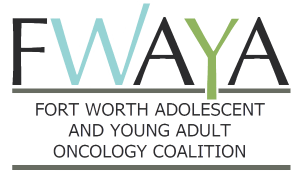
Teenage Leukemia Symptoms | Early Signs Of Teen Cancer
Teenage Leukemia Symptoms Leukemia is a form of cancer that affects white blood cells. In teens, symptoms of leukemia include bone pain, enlarged lymph nodes, fever, fatigue, frequent infections, and bruising or bleeding easily. Leukemia is a form of cancer that...
AYA Cancer Help & Support | How You Can Help FWAYA Coalition
AYA Cancer Help & Support We can not express the gratitude we feel for those that support & donate their time and resources for the Adolescents & Young Adults in our community. FWAYA has served the community for almost ten years and continues to pull the...
An FWAYA Coalition Story | Candice’s Story
An FWAYA Coalition Story Each year 77,000+ young adults are diagnosed with cancer. My 21-year-old self never thought I would be part of this statistic. My 21-year-old self also never imagined not only living this long but to have REALLY lived. No, I guess I never...
Give Today
Contact Us
Fax: 817-698-8471
